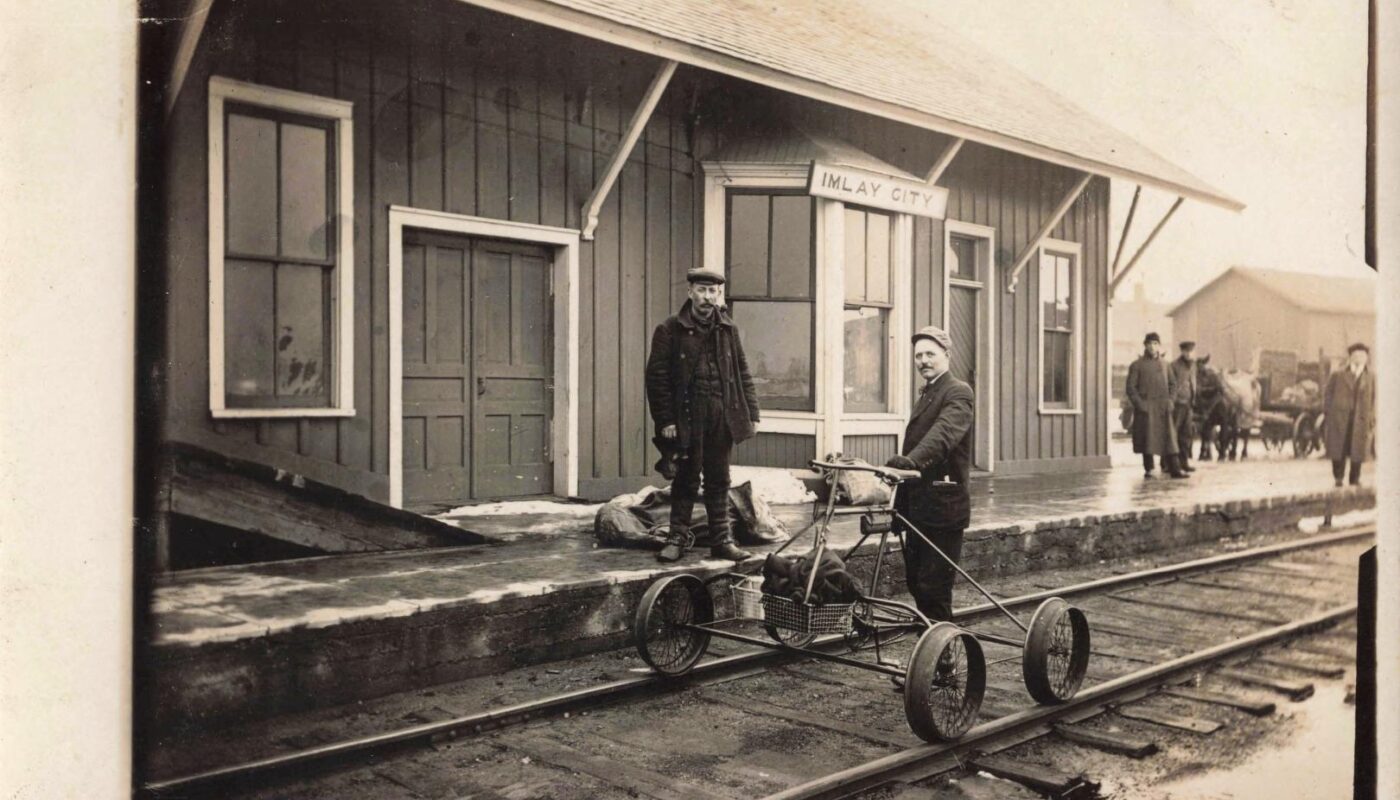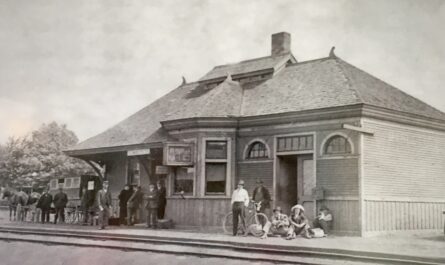Imlay City is a small Michigan town with a big story. Its history began in the 19th century, but the years 1900–1930 were when the town really came alive. In this era, local farms, businesses, and community events created the Imlay City we remember today. For anyone curious about the History of Imlay City Michigan, here is a clear look at those important decades.
Table of Contents
Video – History of Imlay City – A Forgotten Boomtown That Helped Feed Detroit
Imlay City Grew Fast
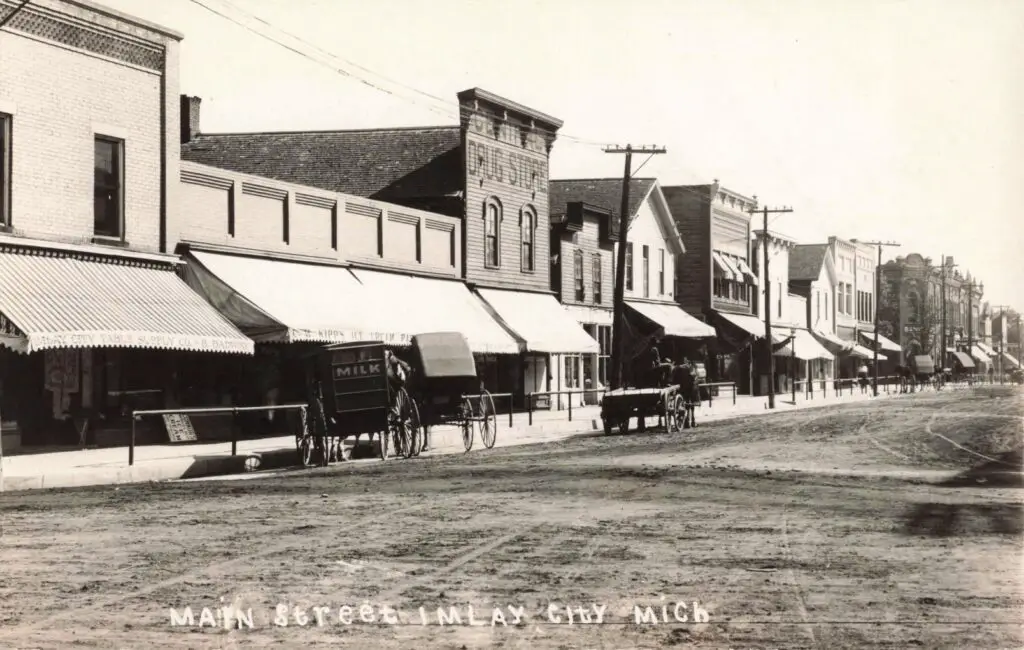
The broad avenue shown in this old photo is West Almont Avenue around 1910. In these years, Imlay City’s main street was busy with shops and wagons. In fact, within months of the railroad’s arrival in 1870, the village grew to 500 people and “boasted a school, two hotels, four general stores, two hardware stores, [and] a furniture store”.
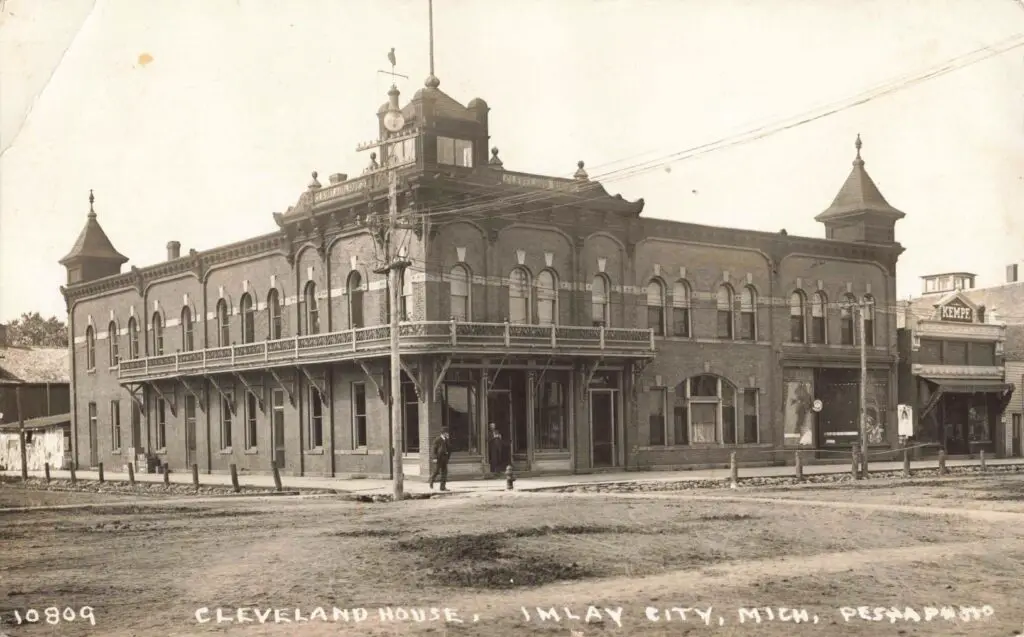
Those first businesses set the stage for Main Street life. By 1900, families could visit the local drugstore, eat at the City Restaurant, or stay overnight at the Palmer Hotel on the corner. Horse-drawn wagons brought milk, meat, and grain to town. Neighbors greeted each other along the wooden sidewalks. All this was the everyday backdrop of Imlay City’s growing community.
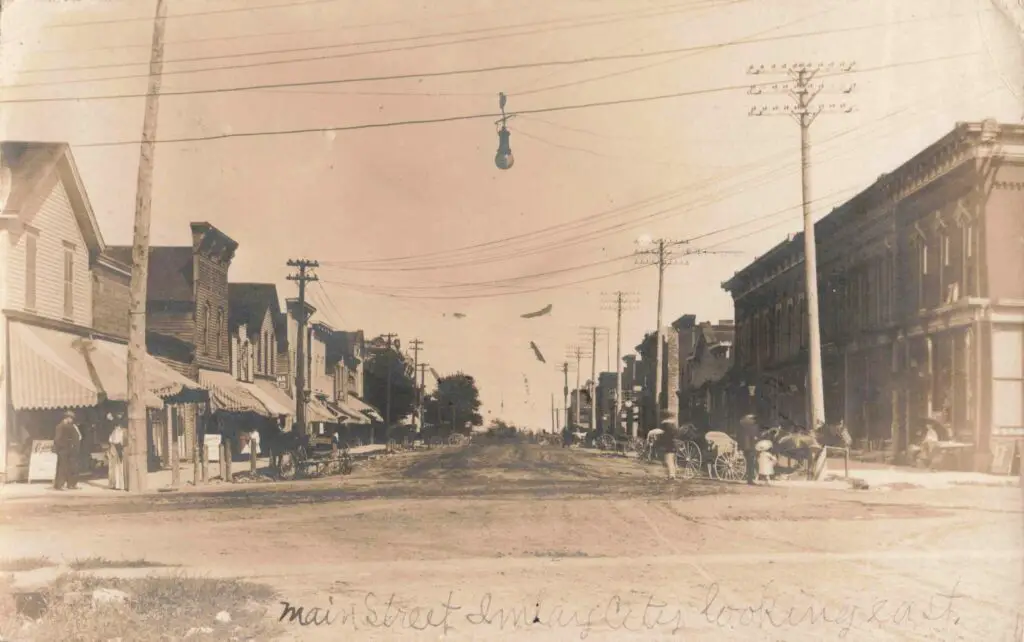
The History of Imlay City Michigan: Early Foundations
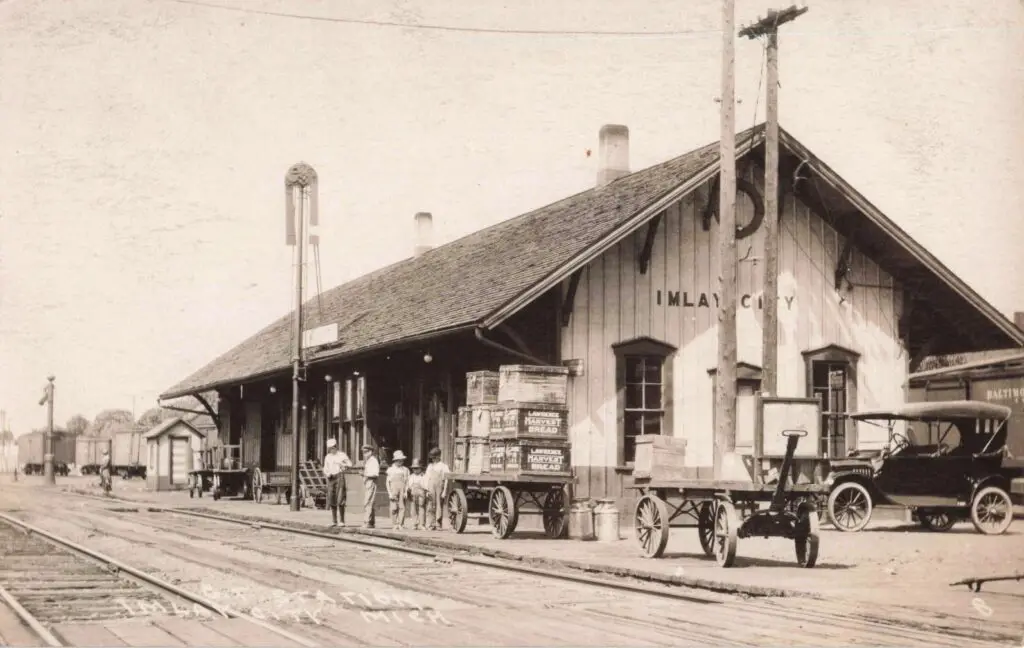
The history of Imlay City Michigan is rooted in the railroad. Charles Palmer, chief engineer of the Port Huron & Lake Michigan Railroad, plotted the town in 1870, buying and surveying 240 acres for a produce market. The village was soon incorporated in 1871 as “Imlay City,” named for William Imlay who had invested in the area. It became an important farm market because trains could ship local crops out and bring goods in.
The first depot stood where the historical museum is today. (That restored depot was actually built later, in 1928, and still has “Imlay City” painted on it.) This railroad connection meant that by 1914, the town even added its own streetcar line – a rare feature for a small town.
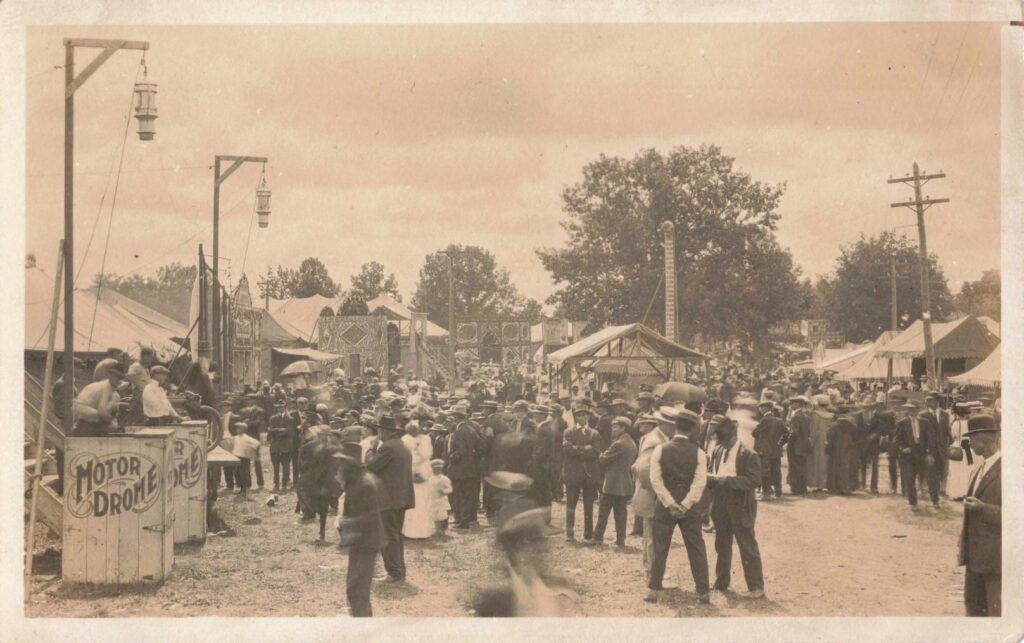
On the county level, Imlay City was already notable. It hosted the first Lapeer County Agricultural Society fair in 1896. Farmers from Lapeer and beyond came here to race horses and show livestock, all paying 25 cents admission.
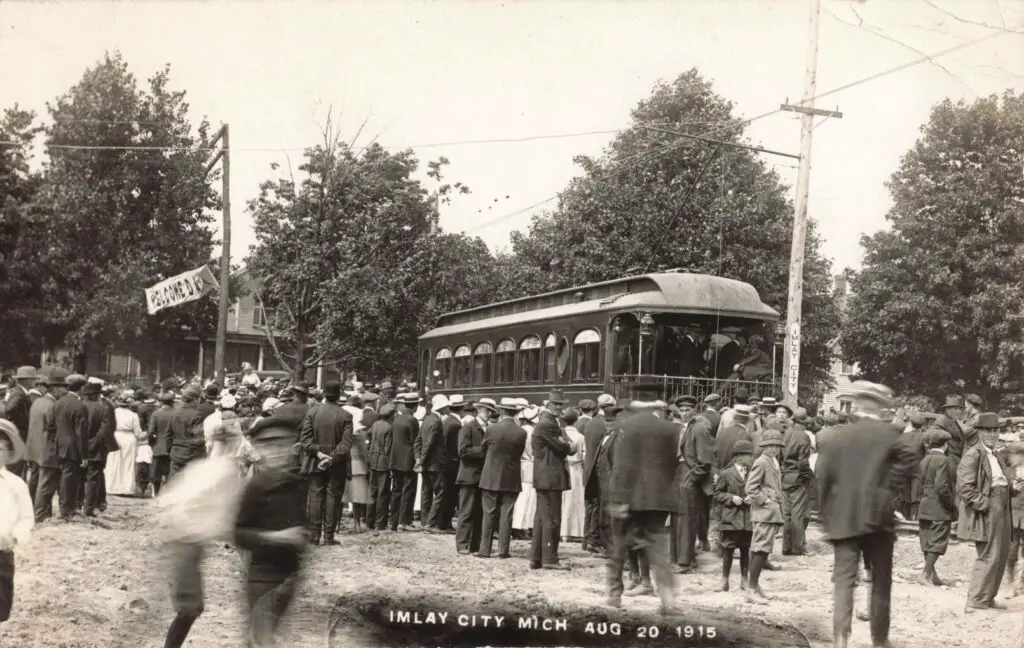
By the early 1900s, these fairs had become big events, with trolleys running from Detroit to carry crowds for exhibitions, horse races, and later tractor pulls. These gatherings brought fame and visitors to Imlay City, weaving its name into the broader history of Michigan’s thumb region.
Main Street Commerce and Community

Life in Imlay City revolved around its shops, lodges, and schools. The downtown was a typical Midwestern “high street” of the era. Hardware stores sold nails and tools for the farms. General stores offered fabric, groceries, and feed. One block housed the Palmer Hotel and dining room. Nearby was H.J. Norris’ lumber yard; behind him stood the post office and a livery stable where carriages waited.
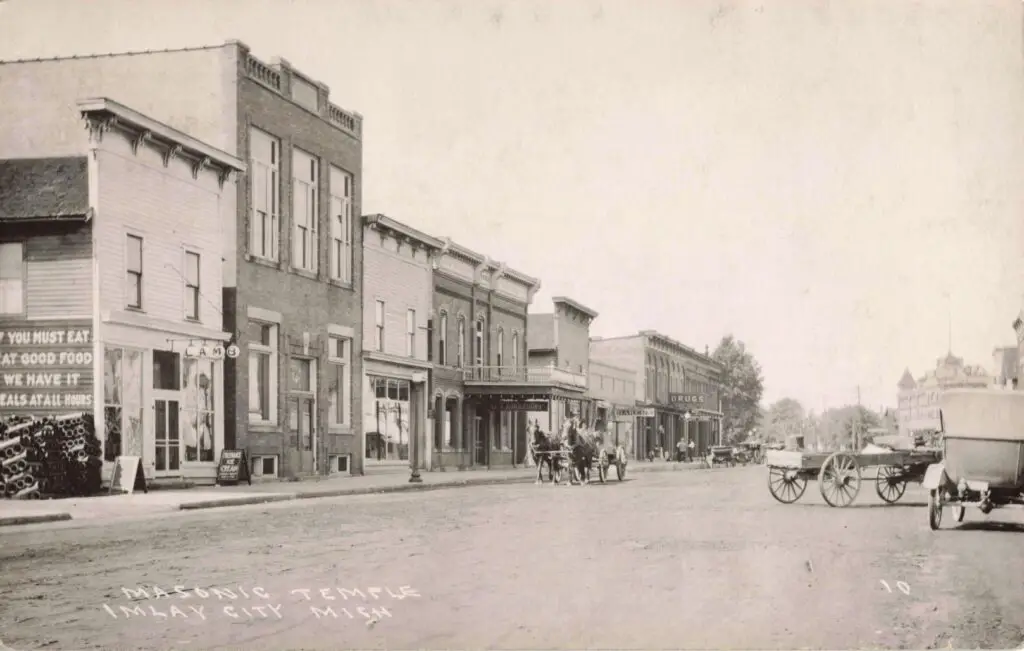
The red brick Masonic Temple (seen in old photos) anchored the business district. From the early 1900s, residents made improvements to downtown – installing sidewalks and electric lights – to keep the town “modern” and attractive for customers.
Community organizations were very active. The Imlay City chapter of the Order of the Eastern Star (a women’s Masonic group) was formed in 1900. Men were already meeting as early as 1876 in Masonic Lodge 341. By 1913 the lodge members built a large new hall at 200 East Third Street. Ground was broken in April 1912 and, with volunteer labor, the brick building was finished by spring 1913. This Masonic Temple featured a grand meeting room, banquet halls and even a basement bowling alley. It became a social center for dances, banquets, and charity events. After work, townspeople might gather at the lodge or at the nearby Imlay City Social Club (a local sports club) to compare community news or play cards.
Agriculture and Local Industry
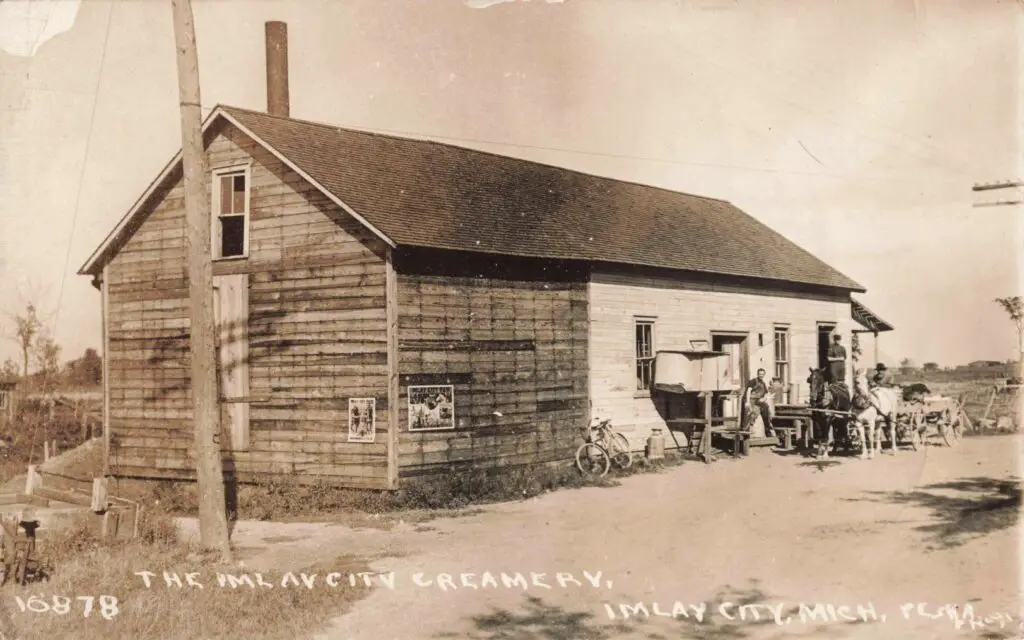
The history of Imlay City Michigan is also one of farms and factories. Surrounding Imlay City were hundreds of acres of farmland: dairy herds, fruit orchards, and truck gardens. To process the cream from all those cows, the town had at least one creamery. State reports from around 1913 list “Imlay City Creamery” and a “cream station” in town, managed by T. B. Keyworth. Keyworth also appears as a leader of the agricultural society that ran the fair. These creameries turned raw milk into butter and condensed milk for Detroit markets.
Besides dairy, the town had a few light industries. For example, photos show the Imlay City Electric Light Company building – people were proud of electric power for street lights and shops. Nearby stood lumber mills and granaries.
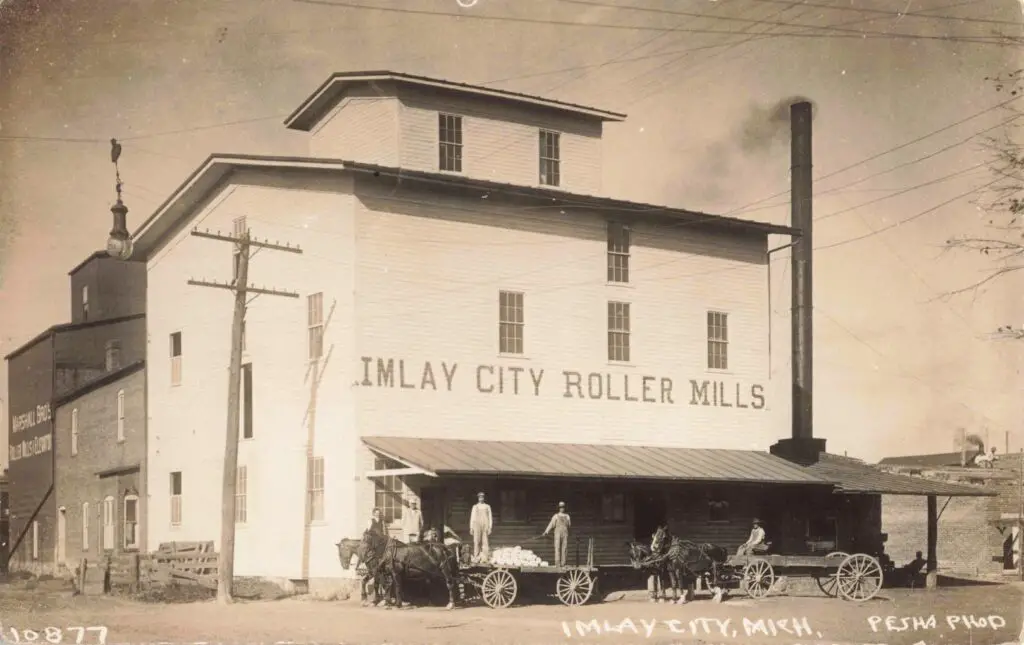
A wooden elevator (grain storage) was on the railroad tracks to load grain from local farms. In winter, farmers would shovel coal from freight cars to heat their homes. These industries, though small, reflected a community tied closely to farm work. When crops were harvested, families all pitched in, and Imlay City was the place they came together to sell or process their yields.
Railroads and Streetcars
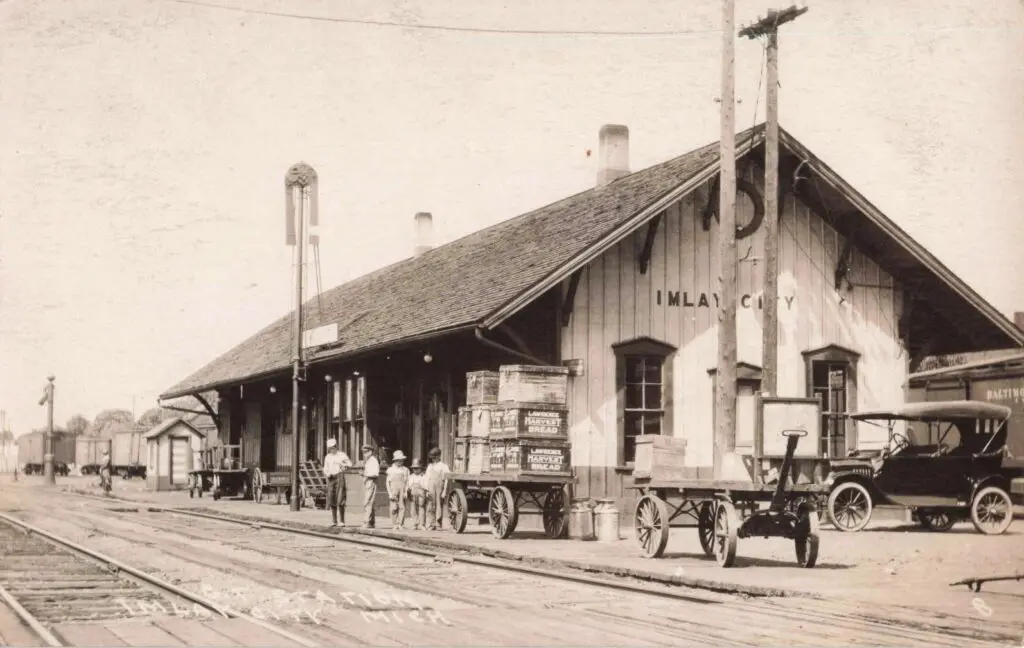
Railroads were literally the lifeline of Imlay City. The Grand Trunk Western Railroad ran east–west through town, and schedules were a part of daily life. Trains brought mail and newspapers each morning; they carried freight like canned beans, lumber, and coal. The Grand Trunk depot (pictured above) connected Imlay City to big cities – in one direction Detroit and, in the other, Flint and beyond.
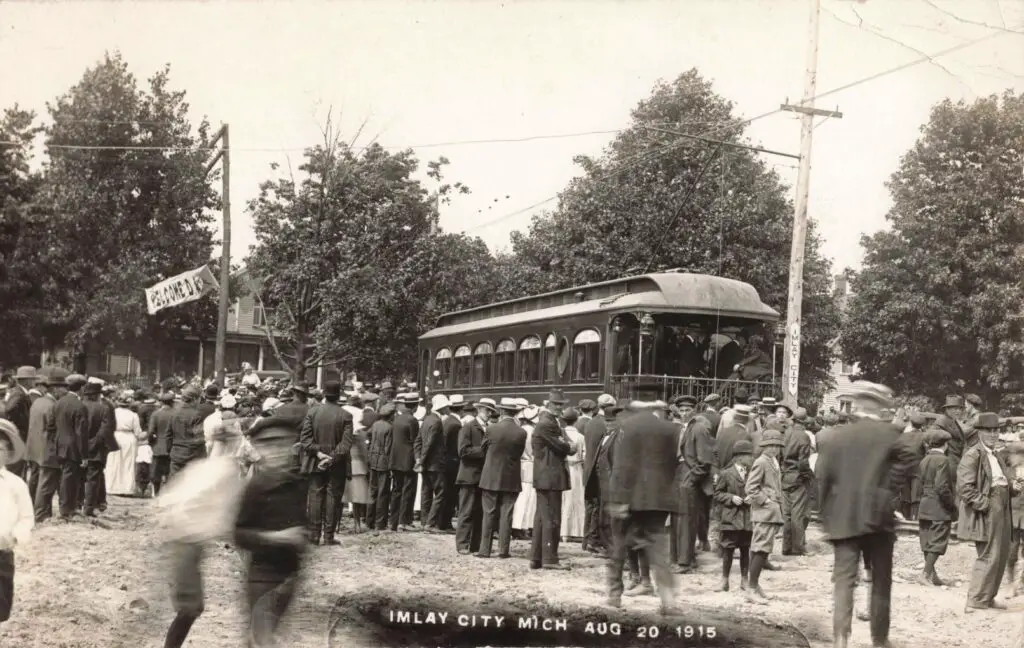
In the summer of 1914, as a sign of prosperity, the city funded its own electric streetcar line along Main Street. That line meant local families could ride in style from one end of town to the other.
Imlay City was also the end of an electric interurban trolley from Detroit. The interurban tracks came up from the south through Almont and stopped on Imlay’s west side. A 1915 postcard even shows an interurban car surrounded by a cheering crowd, likely at the time the trolley began service. The sound of trolley bells and train whistles blended with the clip-clop of horses, marking a time of old technology and new progress.
County Fair and Leisure
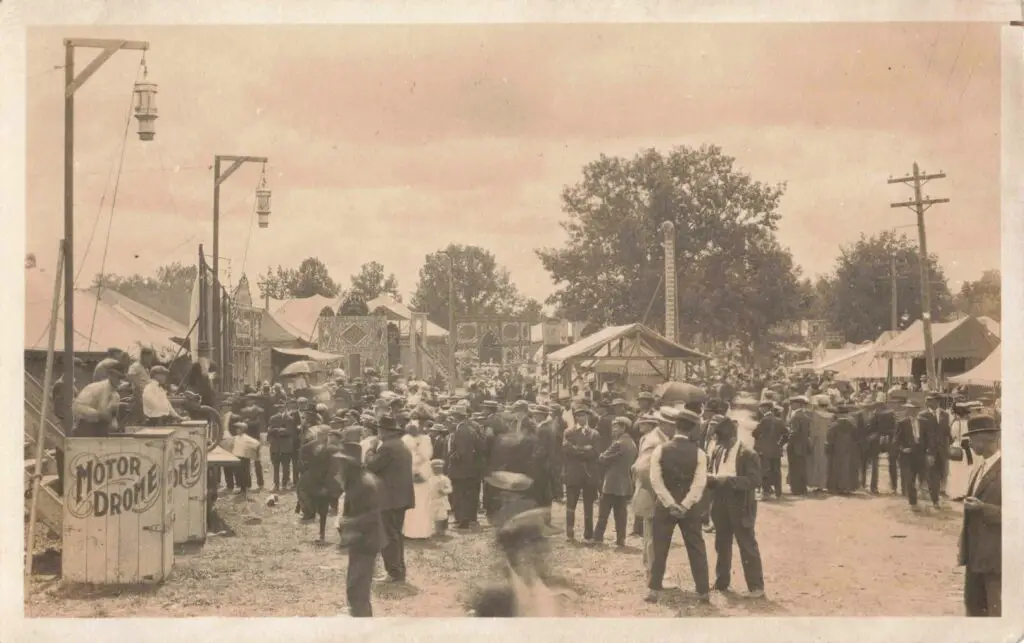
No description of Imlay City is complete without the county fair. The Lapeer County Agricultural Society held its first fair in Imlay City in October 1896, and each fall it grew into a major celebration. By the 1920s, the fairgrounds – located on what’s now Midway Street – had a bustling midway with a Ferris wheel, merry-go-round, and a “Bowery” dance hall. Barns housed prize cattle, pigs, chickens and rabbits. The fair even had its own baseball diamond for weekend games. One striking memory is that in the late 1910s, chartered trolleys ran from Detroit with 50 passengers apiece, bringing people in for daily entertainment. This made the fair “the place to be” each October.
On quieter days, people made their own fun. Children ice-skated on Spring Street pond in winter. Teens gathered for silent “moving picture” showings at the VFW hall (early movie nights). Families picnicked at church socials and school events. Local baseball teams played against nearby towns. All these activities brought an emotional warmth to Imlay City’s history – neighbors supporting neighbors, celebrating together on holidays, and helping one another through the hard years of World War I and the farm bust of the 1920s.
Legacy of a Small Town

By 1930, the seeds planted in Imlay City’s first decades had deeply rooted. Many of the brick downtown buildings and homes from that era still stand. The depot survives as the Imlay City Historical Museum, hosting the old Grand Trunk caboose outside. Annual community events like the fair and parades recall that early spirit.
The history of Imlay City Michigan during 1900–1930 is a noted example to rural ingenuity. The town’s farmers, merchants, and families built a lively community out of prairie fields. They ran creameries and canneries, hosted thousands at the fair, and forged lasting bonds in church and lodge halls. Understanding this history helps us appreciate how everyday Americans shaped the modern world. Today’s Imlay City still honors this legacy through its preserved old town and the annual Eastern Michigan State Fair. The story of those years remains an inspiring chapter in Michigan’s heartland.
Discover more from Thumbwind
Subscribe to get the latest posts sent to your email.

